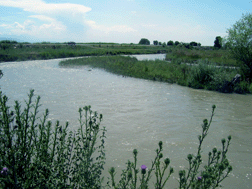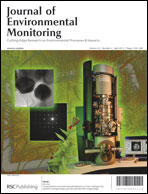Uranium series radionuclides in surface waters from the Shu river (Kazakhstan)
Abstract
The concentrations of 238U, 234U, 226Ra, 210Po and 210Pb have been determined in surface waters collected along the course of the Shu River, lying on the border between Kazakhstan and Kyrgyzstan. In the study area, the river runs through some of the largest uranium deposits worldwide, which were actively exploited during the nuclear weapons and nuclear energy programmes of the former Soviet Union. The data show an increasing trend in uranium concentrations downstream the river from the city of Tokmak to the city of Shu, with good correlation between total uranium concentrations and total dissolved solids. Data on uranium isotopes disequilibrium show the presence of technogenic uranium inputs into the Shu River downstream from the city of Karasu, evidenced by a decrease in the measured 234U/238U isotopic ratio from 1.63 in uncontaminated sites to 1.29 in sites affected by past mining activities.


 Please wait while we load your content...
Please wait while we load your content...